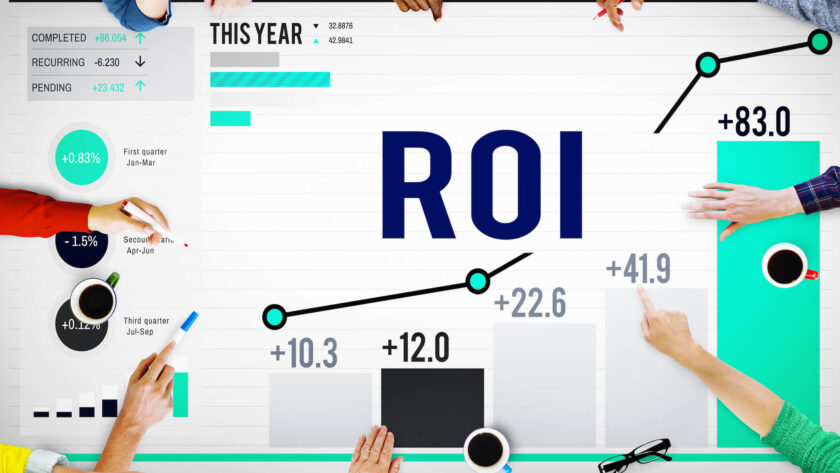In today’s competitive business environment, marketing campaigns are critical for driving growth and brand recognition. However, measuring the effectiveness of these campaigns can be challenging. One of the most important metrics to assess is Return on Investment (ROI). Understanding how to measure ROI is crucial because it helps businesses determine whether their marketing efforts are delivering value and achieving the desired outcomes.
This article will delve into the key strategies, tools, and metrics that businesses can use to effectively measure the ROI of their marketing campaigns.
1. What Is Marketing ROI?
Marketing ROI is a metric that helps businesses assess the profitability of their marketing investments. It essentially measures the return generated from a marketing campaign relative to the cost of running it. In simpler terms, it answers the question: “For every dollar spent on marketing, how much return do I get?”
The formula for calculating marketing ROI is: Marketing ROI=Revenue from Marketing Campaign−Cost of CampaignCost of Campaign×100text{Marketing ROI} = frac{text{Revenue from Marketing Campaign} – text{Cost of Campaign}}{text{Cost of Campaign}} times 100
For example, if a business spent $5,000 on a marketing campaign and generated $20,000 in revenue from it, the ROI would be: Marketing ROI=20,000−5,0005,000×100=300%text{Marketing ROI} = frac{20,000 – 5,000}{5,000} times 100 = 300%
This means the business earned three times the amount it invested in the campaign, or a 300% return on investment.
2. Why Is Measuring Marketing ROI Important?
Measuring the ROI of marketing campaigns is essential for several reasons:
- Justifying Marketing Spend: Marketing can be costly, and understanding its effectiveness helps businesses justify their marketing budgets to stakeholders or investors. If ROI is positive, it proves that the marketing investment is paying off.
- Optimizing Campaigns: Analyzing the ROI of marketing campaigns allows businesses to identify what works and what doesn’t. By tracking performance, businesses can optimize future campaigns, focusing on strategies that generate the best return.
- Resource Allocation: Marketing budgets are often limited, and by measuring ROI, companies can allocate their resources more efficiently. They can prioritize high-ROI marketing channels and strategies over those that are underperforming.
- Strategic Decision-Making: Marketing ROI provides valuable insights into customer behavior, preferences, and the overall effectiveness of marketing strategies, helping businesses make data-driven decisions moving forward.
3. What Are the Key Metrics to Measure Marketing ROI?
To calculate the ROI of a marketing campaign, it’s important to track the right metrics. The key performance indicators (KPIs) vary depending on the type of marketing campaign, but the following are some of the most commonly used metrics for measuring ROI.
1. Revenue Attribution
Revenue attribution involves identifying and measuring the revenue generated as a direct result of your marketing efforts. For accurate ROI measurement, it’s essential to track how much of the revenue can be attributed to the campaign.
- Direct Attribution: Some campaigns, like direct-response ads, allow for direct revenue attribution. For example, when a customer clicks on an ad and immediately makes a purchase.
- Assisted Attribution: Other campaigns may contribute indirectly to a sale by building brand awareness, generating leads, or nurturing prospects. These may not lead to immediate conversions, but they still play an essential role in the customer journey.
To measure ROI accurately, businesses must ensure they attribute revenue properly, considering both direct and assisted impacts.
2. Customer Acquisition Cost (CAC)
Customer acquisition cost (CAC) is the cost of acquiring a new customer through marketing efforts. It’s calculated by dividing the total cost of a marketing campaign by the number of new customers acquired. CAC=Total Campaign CostsNumber of New Customers Acquiredtext{CAC} = frac{text{Total Campaign Costs}}{text{Number of New Customers Acquired}}
A lower CAC is generally preferable because it indicates that the business is acquiring customers efficiently. When measuring ROI, it’s important to compare CAC with the revenue generated from the newly acquired customers to assess the profitability of the marketing campaign.
3. Customer Lifetime Value (CLV)
Customer lifetime value (CLV) refers to the total amount of revenue a customer is expected to generate for a business over the course of their relationship. This is a crucial metric for measuring ROI because acquiring high-value customers can provide long-term returns that exceed initial marketing costs. CLV=Average Purchase Value×Purchase Frequency×Customer Lifespantext{CLV} = text{Average Purchase Value} times text{Purchase Frequency} times text{Customer Lifespan}
A high CLV combined with a low CAC suggests that the business is acquiring profitable customers at a reasonable cost, which can significantly increase the ROI of the marketing campaign.
4. Lead Generation and Conversion Rates
For businesses that rely on generating leads rather than direct sales, measuring lead generation and conversion rates is critical. Lead generation is the process of attracting potential customers (leads), while conversion rates measure how well those leads turn into paying customers.
- Lead Generation: The number of leads generated by a marketing campaign provides insight into how effective the campaign was at attracting interest.
- Conversion Rate: The conversion rate is calculated by dividing the number of leads that turn into customers by the total number of leads generated. A high conversion rate indicates that the campaign was successful in driving high-quality leads.
Monitoring lead generation and conversion rates helps businesses understand whether they’re targeting the right audience and if their campaigns are effective at nurturing prospects.
5. Engagement Metrics
Engagement metrics help measure how customers interact with your campaign. While engagement itself might not directly contribute to ROI, it indicates whether your target audience is interested in your messaging and content.
Common engagement metrics include:
- Click-Through Rate (CTR): The percentage of people who click on a link in your ad or email.
- Social Media Engagement: Likes, shares, comments, and mentions on social media platforms.
- Time on Site: The amount of time users spend on your website, which indicates their level of interest.
High engagement rates suggest that your campaign is resonating with your target audience, which can increase the likelihood of conversions and revenue generation.
6. Return on Ad Spend (ROAS)
Return on ad spend (ROAS) is a metric that measures the revenue generated from advertising relative to the amount spent on those ads. It’s a more specific measure of ROI for advertising campaigns. ROAS=Revenue from AdsCost of Adstext{ROAS} = frac{text{Revenue from Ads}}{text{Cost of Ads}}
For example, if a business spends $2,000 on ads and generates $8,000 in revenue from those ads, the ROAS would be 4. This means that for every dollar spent on ads, the business earned $4 in revenue.
7. Brand Awareness Metrics
For businesses focusing on long-term growth, brand awareness is an important metric, even though it doesn’t always result in immediate sales. Campaigns that focus on brand awareness typically aim to increase visibility and recognition.
Brand awareness metrics can include:
- Impressions: The number of times your ad, content, or message is displayed to a user.
- Reach: The number of unique individuals who saw your content.
- Brand Sentiment: The public’s perception of your brand, which can be measured through social listening tools and surveys.
Although brand awareness doesn’t directly translate into revenue, it can contribute to long-term ROI by creating a foundation for future sales and customer loyalty.
4. How to Track and Measure Marketing ROI Effectively
Tracking and measuring ROI requires using the right tools, integrating data from various sources, and analyzing results in real-time. Here’s how to track marketing ROI effectively:
1. Set Clear Goals and KPIs
Before launching any marketing campaign, it’s essential to define clear objectives and key performance indicators (KPIs). Are you focused on increasing sales, generating leads, improving brand awareness, or something else? Your KPIs will guide the metrics you track and help you assess campaign success.
2. Use Analytics Tools
Modern analytics tools, such as Google Analytics, HubSpot, and social media platforms’ built-in analytics, can help track various metrics such as website traffic, conversions, leads, and sales.
- Google Analytics: Measures website traffic, conversion rates, and sales generated from marketing campaigns.
- CRM Software: Customer relationship management (CRM) software like Salesforce can track the impact of campaigns on customer acquisition and retention.
- Social Media Analytics: Platforms like Facebook, Instagram, and LinkedIn provide detailed insights into engagement, reach, and conversions.
3. Track Attribution
Marketing attribution tools help track the customer journey and determine which touchpoints contributed to a conversion. Understanding the role each marketing channel plays allows you to allocate credit and measure the full impact of your campaigns.
- First-Touch Attribution: Credits the first interaction a customer has with your brand.
- Last-Touch Attribution: Credits the last interaction before a conversion.
- Multi-Touch Attribution: Distributes credit across multiple touchpoints in the customer journey.
4. Continuously Analyze and Optimize
Once the data is collected, continuously analyze it to assess how well the campaign performed and identify areas for improvement. Optimize your campaigns based on insights to increase their effectiveness and ROI in future efforts.
Conclusion
Measuring the ROI of marketing campaigns is essential for understanding whether your marketing efforts are delivering value. By focusing on key metrics such as revenue attribution, customer acquisition cost, customer lifetime value, lead conversion rates, and engagement, businesses can gain a clear picture of the effectiveness of their campaigns.
It’s also crucial to use the right tools and data integration strategies to track and measure these metrics accurately. With a strategic approach to tracking ROI, businesses can refine their marketing strategies, optimize their campaigns, and make more informed decisions to drive growth and profitability.




